Abstract
Vibriocidal and agglutination tests have been performed, using a microtechnique, on 170 pairs of sera obtained, at intervals of 13-26 days, from bacteriologically proven cholera patients and their contacts, carriers and vibrio-negative contacts. Of the carriers, 44%-46% of those with low initial vibriocidin titres (≤ 1:80) and 28%-37% of those having high initial titres (≤ 1:160) showed a 4-fold or greater rise in vibriocidal titres. Carriers and negative contacts exhibited almost similar pictures. With an increase in the number of carriers per household, a larger number of negative contacts developed significant titres in their second samples. In general, initial titres increased with age, but were highest in the 10-25-years age-group: however, 30% of children below 10 years of age had titres ≥ 1:640. The results indicated that individuals with high titres might become carriers but may not suffer from overt cholera.
The investigation also showed that retrospective diagnosis of cholera infection in a highly endemic area should not depend on serology alone.
Full text
PDF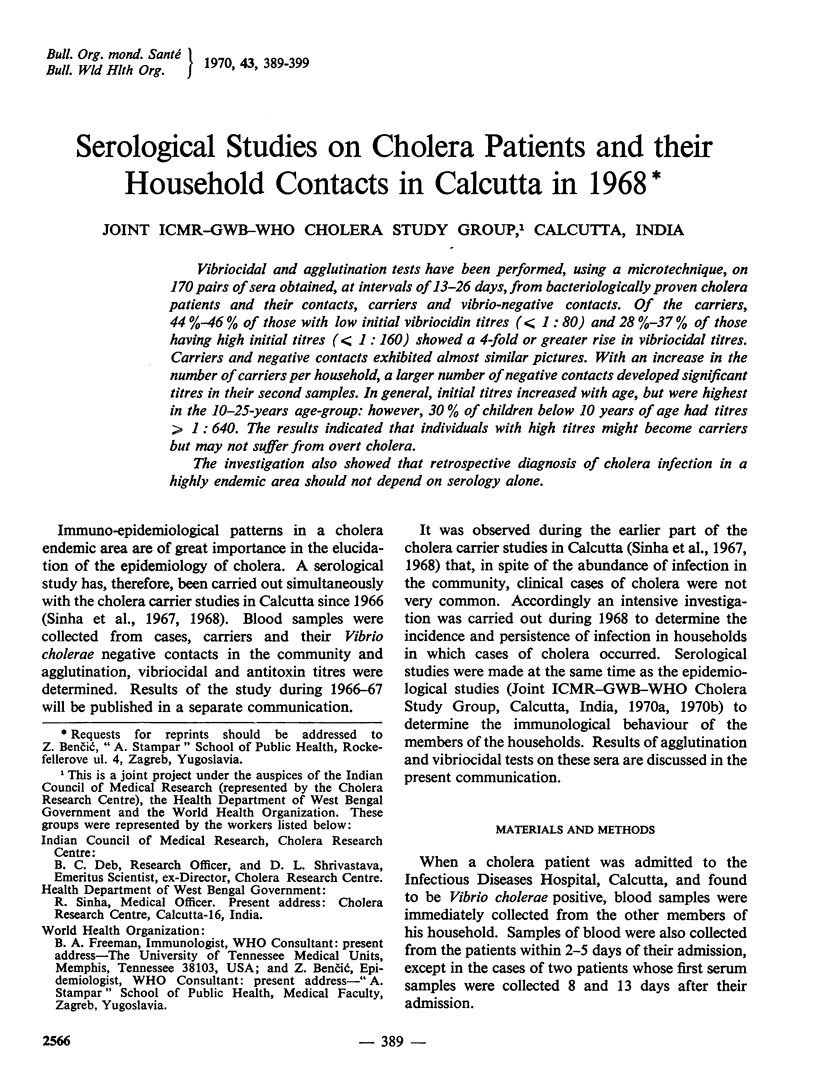
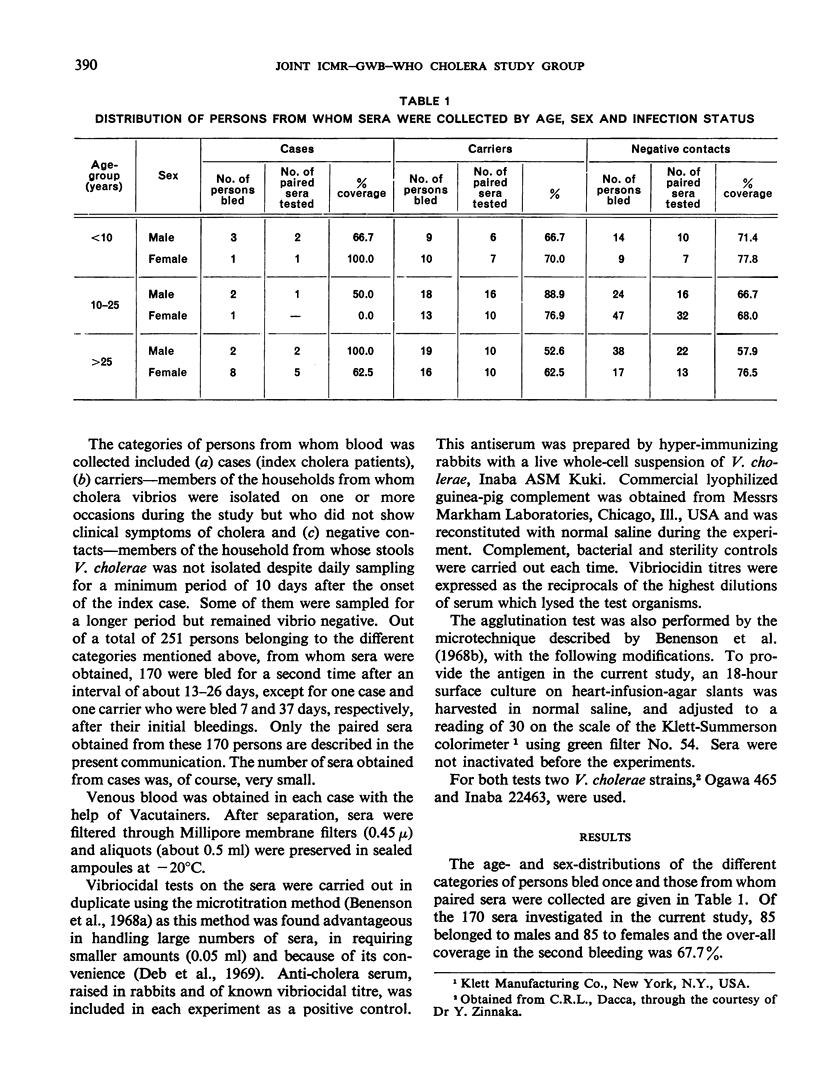
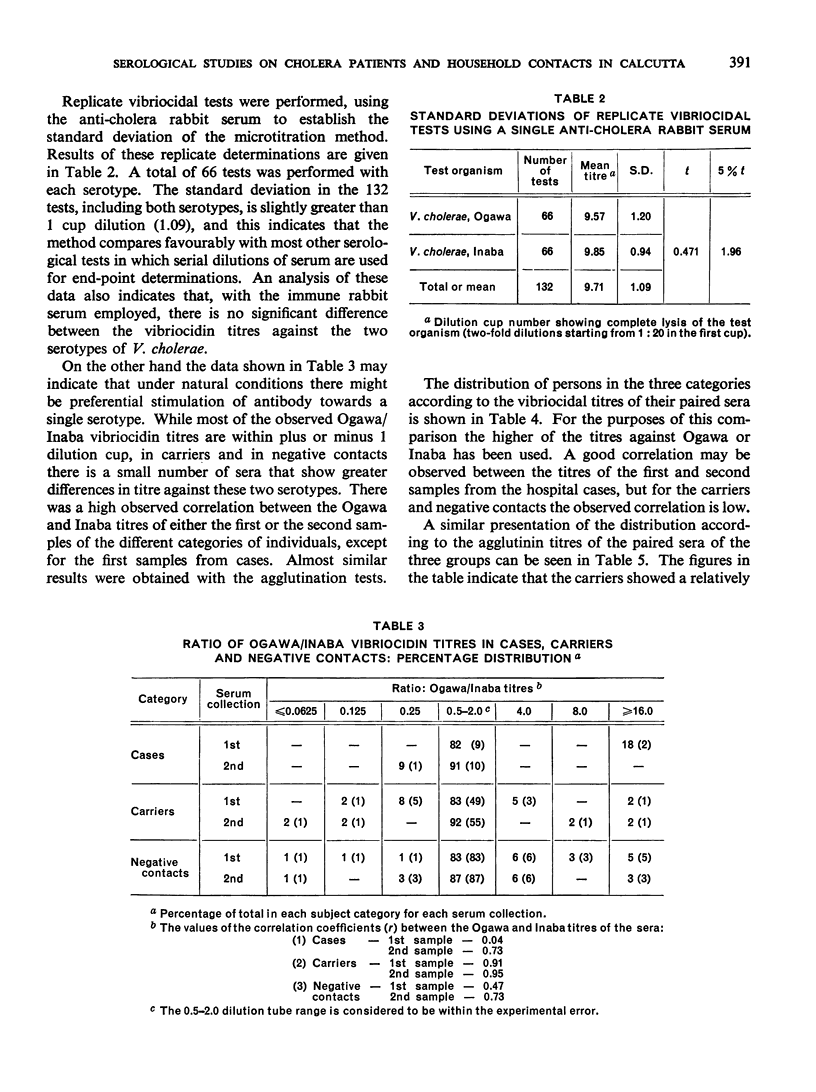
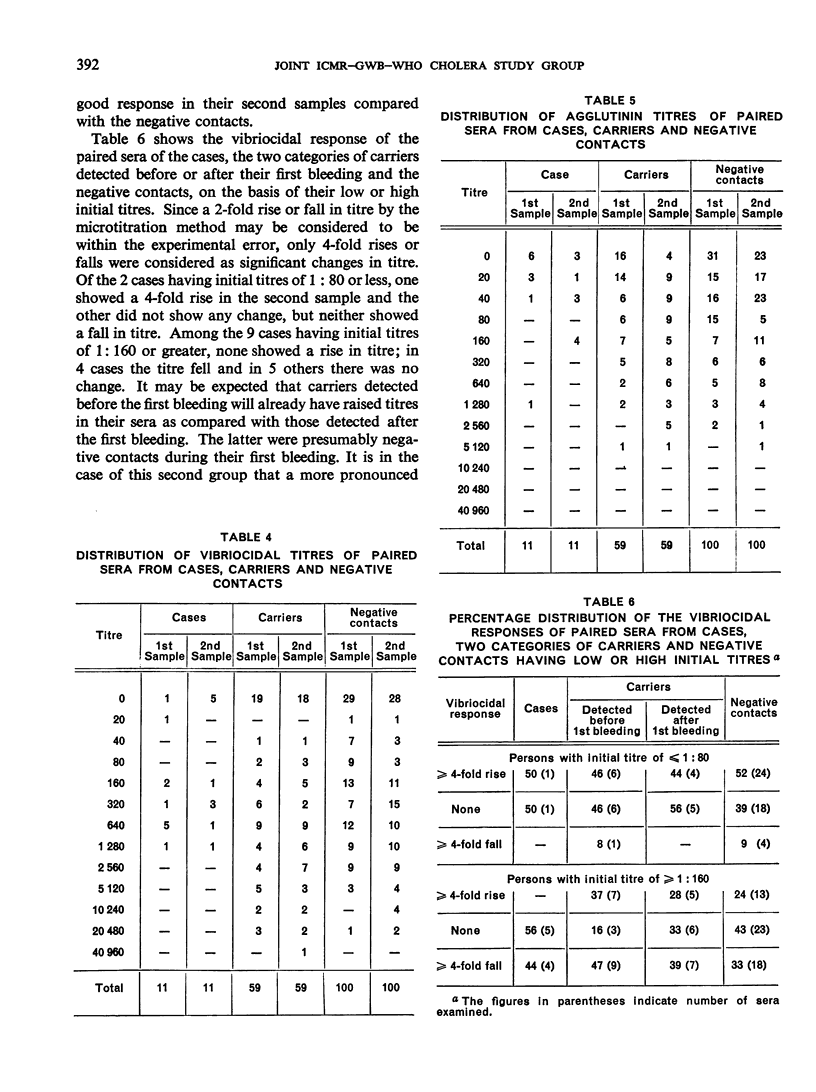
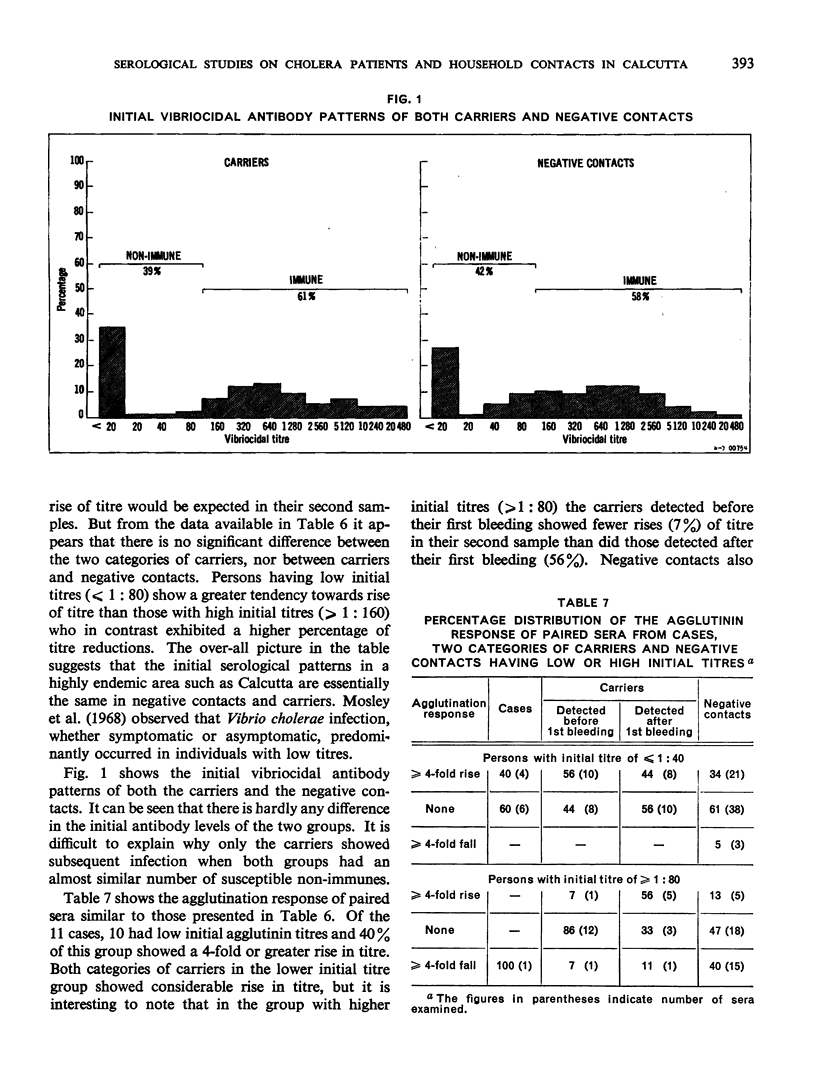
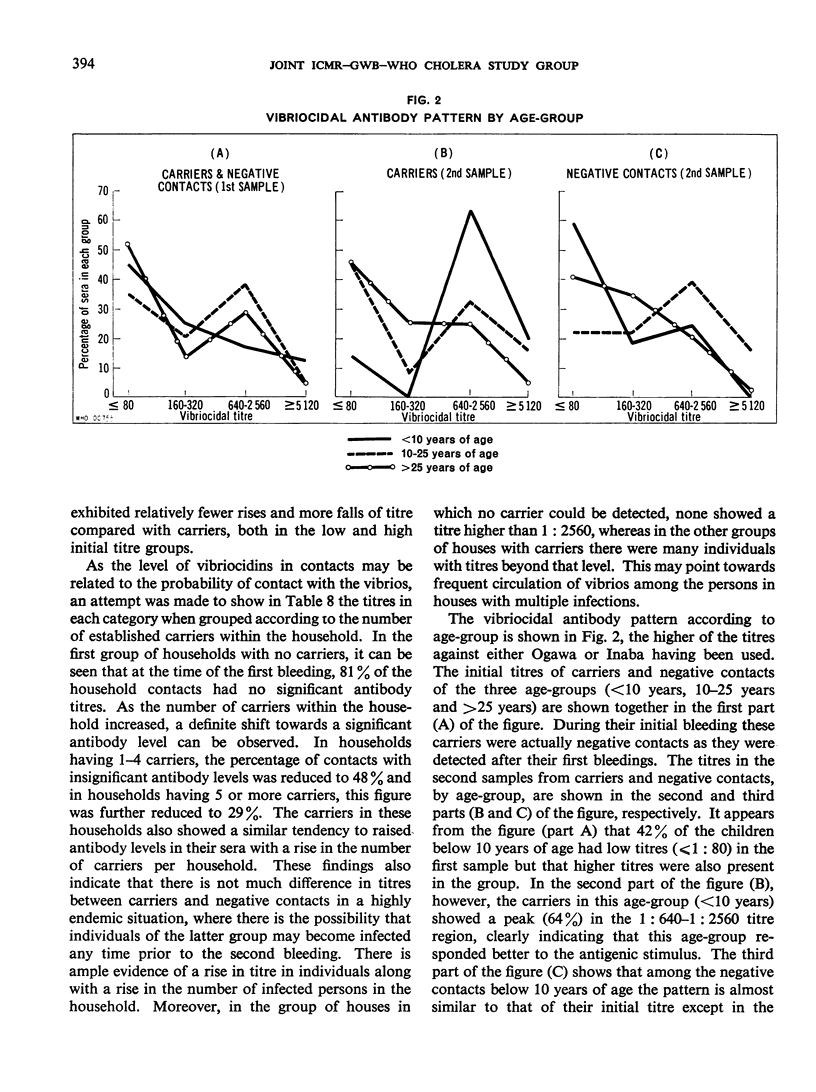
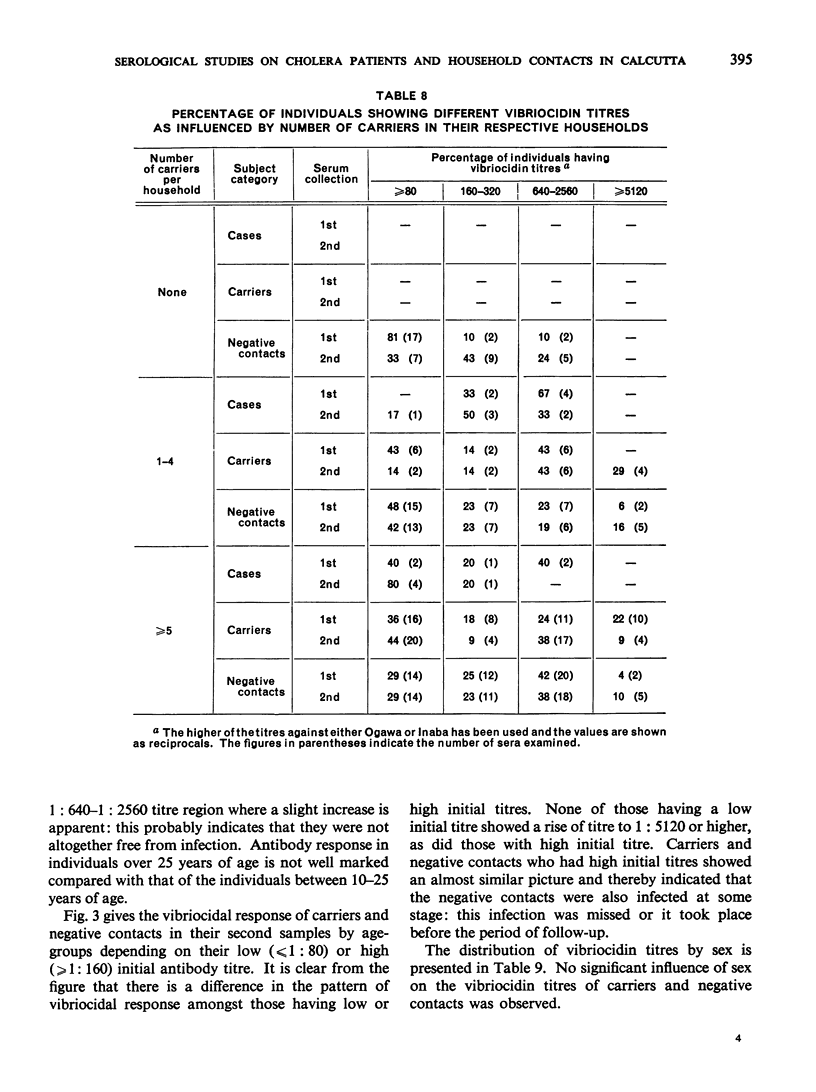
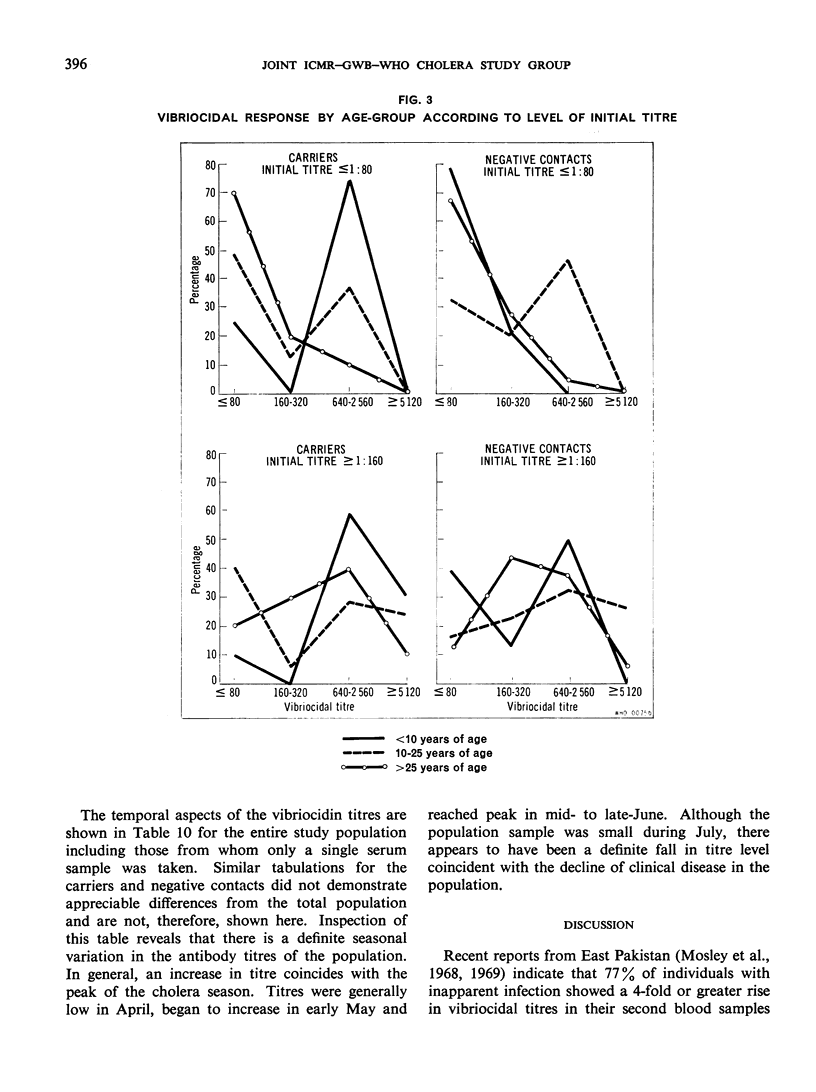
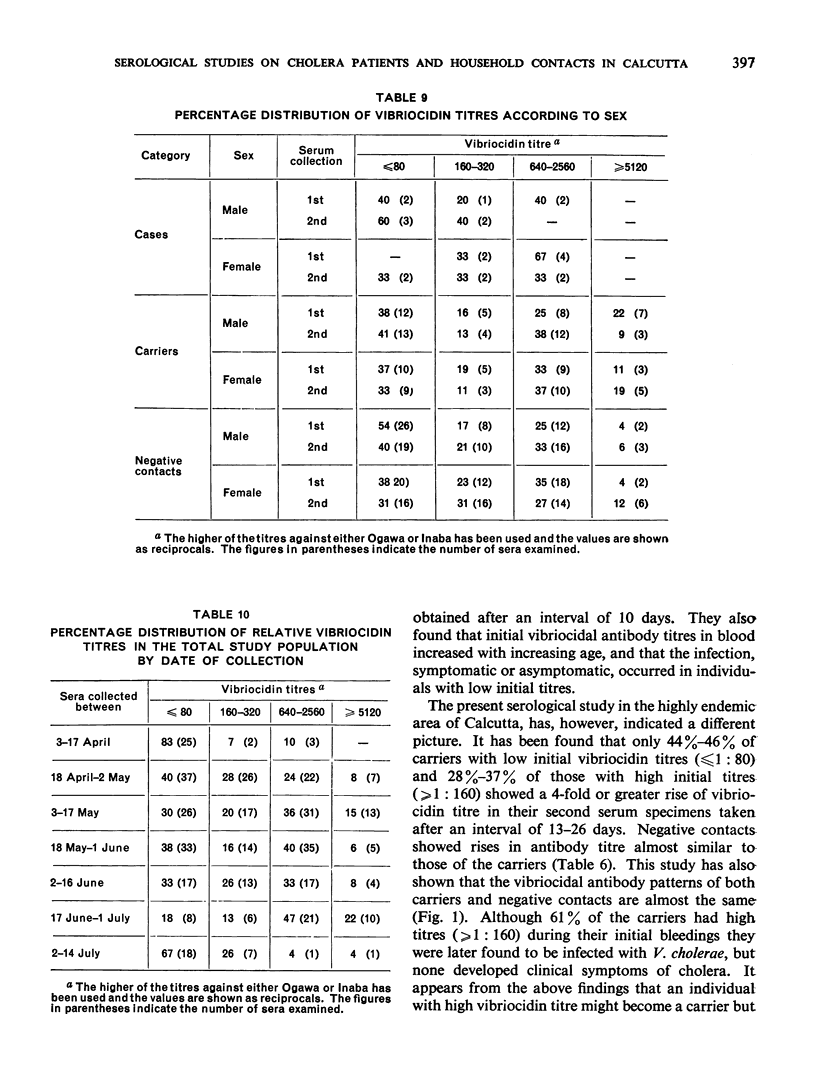
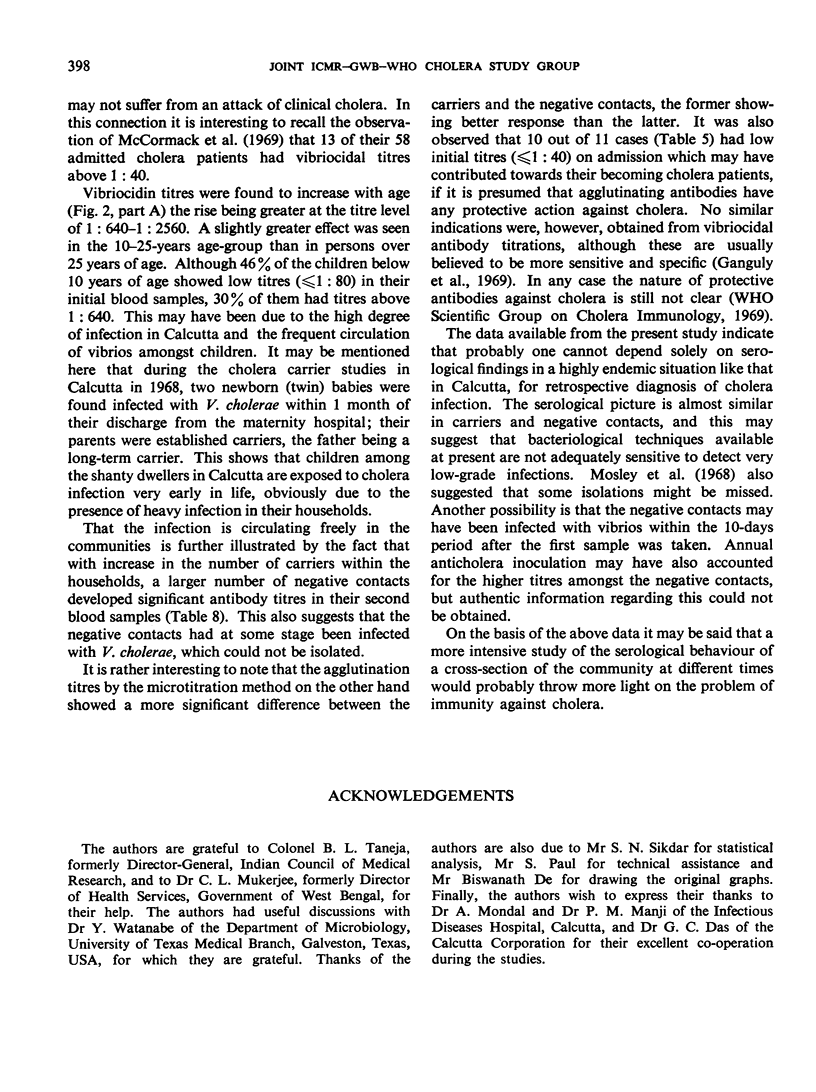
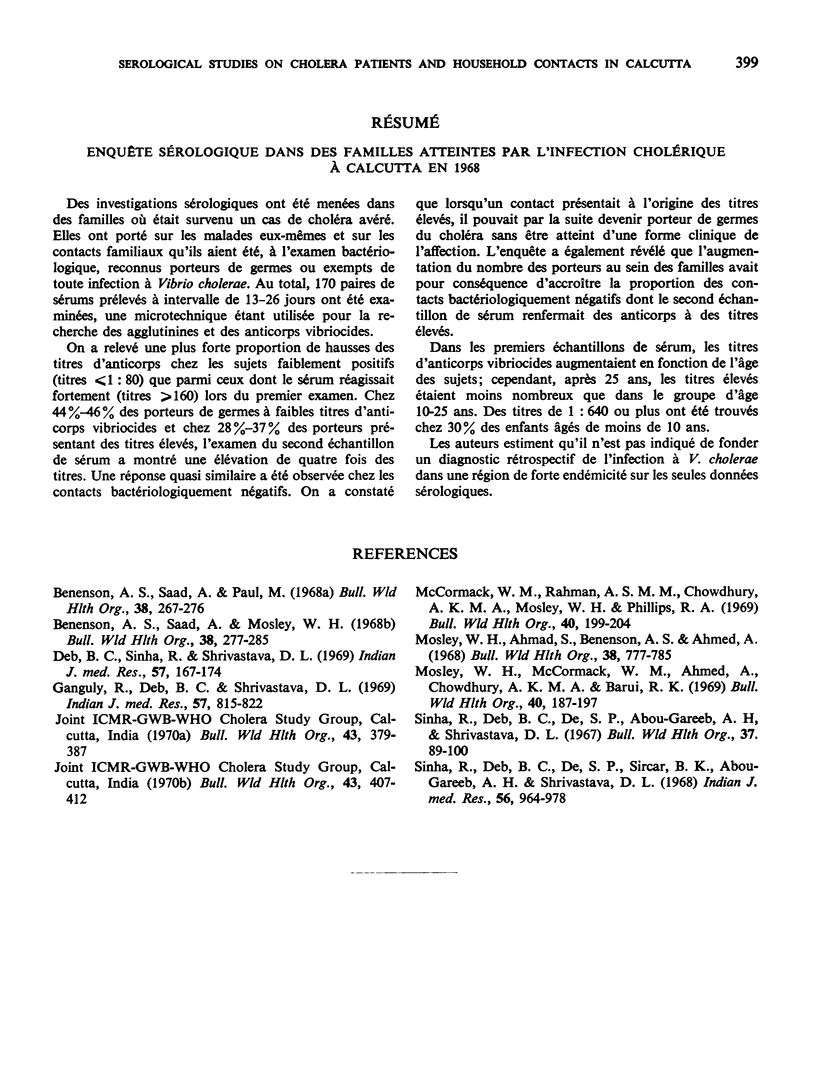
Selected References
These references are in PubMed. This may not be the complete list of references from this article.
- Benenson A. S., Saad A., Mosley W. H. Serological studies in cholera. 2. The vibriocidal antibody response of cholera patients determined by a microtechnique. Bull World Health Organ. 1968;38(2):277–285. [PMC free article] [PubMed] [Google Scholar]
- Benenson A. S., Saad A., Paul M. Serological studies in cholera. I. Vibrio agglutinin response of cholera patients determined by a microtechnique. Bull World Health Organ. 1968;38(2):267–276. [PMC free article] [PubMed] [Google Scholar]
- Deb B. C., Sinha R., Shrivastava D. L. Vibriocidal antibody titrations: a comparison of three methods. Indian J Med Res. 1969 Jan;57(1):167–174. [PubMed] [Google Scholar]
- Ganguly R., Deb B. C., Shrivastava D. L. Vibriocidal test and its parameters. Indian J Med Res. 1969 May;57(5):815–822. [PubMed] [Google Scholar]
- McCormack W. M., Rahman A. S., Chowdhury A. K., Mosley W. H., Phillips R. A. Report of the 1966-67 cholera vaccine field trial in rural East Pakistan. 3. The lack of effect of prior vaccination or circulating vibriocidal antibody on the severity of clinical cholera. Bull World Health Organ. 1969;40(2):199–204. [PMC free article] [PubMed] [Google Scholar]
- Mosley W. H., Ahmad S., Benenson A. S., Ahmed A. The relationship of vibriocidal antibody titre to susceptibility to cholera in family contacts of cholera patients. Bull World Health Organ. 1968;38(5):777–785. [PMC free article] [PubMed] [Google Scholar]
- Mosley W. H., McCormack W. M., Ahmed A., Chowdhury A. K., Barui R. K. Report of the 1966-67 cholera vaccine field trial in rural East Pakistan. 2. Results of the serological surveys in the study population--the relationship of case rate to antibody titre and an estimate of the inapparent infection rate with Vibrio cholerae. Bull World Health Organ. 1969;40(2):187–197. [PMC free article] [PubMed] [Google Scholar]
- Sinha R., Deb B. C., De S. P., Abou-Gareeb A. H., Shrivastava D. L. Cholera carrier studies in Calcutta in 1966-67. Bull World Health Organ. 1967;37(1):89–100. [PMC free article] [PubMed] [Google Scholar]
- Sinha R., Deb B. C., De S. P., Sirkar B. K., Abou-Gareeb A. H., Shrivastava D. L. Role of carriers in the epidemiology of cholera in Calcutta. Indian J Med Res. 1968 Jul;56(7):964–978. [PubMed] [Google Scholar]


